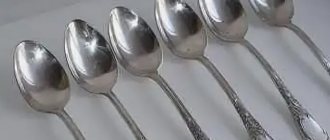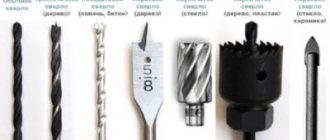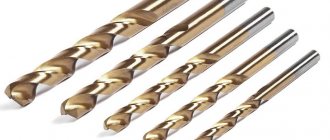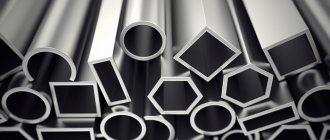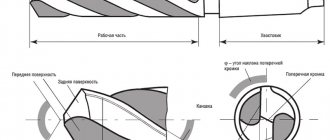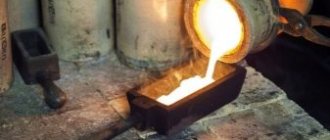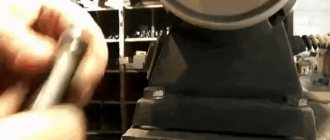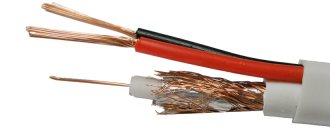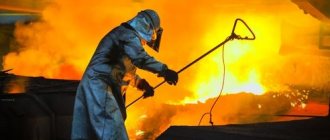Share with friends:
Linoleum has long been present in our homes and is strongly associated with budget covering for the kitchen, corridor or loggia. But even the low cost does not detract from its positive qualities, especially resistance to changes in humidity and ease of installation and cleaning.
And what could be easier than going to a hardware store, buying a roll of linoleum that more or less matches the color of the walls, and laying it on the floor? It sounds like a joke, but most people still do this!
Today, linoleum has acquired varieties specially created for certain rooms and operating conditions. Modern production makes it possible to produce products in a fairly rich color palette, while imitating the most popular surfaces.
Modern linoleum is divided into 3 types:
- Domestic;
- Semi-commercial;
- Commercial.
Household materials firmly hold the leading position. Although it is not highly wear-resistant, it is actively used in residential premises. But semi-commercial and commercial coverage raises a number of questions. And it is quite difficult for the uninitiated man in the street to determine where the line between them lies.
A little history of linoleum
The distant ancestor of modern rolled and tiled flooring can be considered oiled sheets of dense fabric, which were used not only for sails, but also for laying on the floor. In 1763, Englishman Nathan Smith patented a material that consisted of woven panels coated with a hot mixture of pine resin, brown dye, beeswax and linseed oil - camptulicon. The new flooring was not particularly popular among buyers, but the manufacturer continued to experiment and look for optimal combinations.
In 1843, natural rubber and ground cork were introduced into the composition of the future linoleum, but due to a serious increase in the price of ingredients (due to the invention of car tires), the composition was processed and modified linseed oil - drying oil - was introduced. The technology for producing the finished product was also improved, and on December 19, 1863, Frederick Walton received a patent for the production of linoleum (linum - flax and oleum - oil). In subsequent years, the recipe, as well as the manufacturing method, was refined. At the beginning of the 20th century (Great Britain) supplied the European market with a floor covering made from a mixture of several vegetable oils (modified) called glyphthalic linoleum. The same goods were also produced by factories of the Russian Empire located in Riga, Odessa and other cities.
Today this product is produced by the largest factories in the world - Forbo, Tarkett and others. In Europe, it retained its old name - natural linoleum. In our country it is known by the name of the registered trademark of the Forbo Flooring Systems company - marmoleum or marmoleum.
Table 1 . Advantages and disadvantages of marmoleum
| pros | Minuses |
| High wear resistance | Permanent characteristic odor of oils |
| Bacteriostatic | Brittleness at sub-zero temperatures |
| Non-slip surface | High price |
| Moderate fire resistance | The need for installation using special adhesives |
| Antistatic | |
| Disposal by biodegradation | |
| Easy cleaning and care | |
| Health safety for adults and children |
On the territory of our country since the mid-50s. last century, due to the scarcity of natural raw materials, a new product was developed - PVC linoleum. Although the composition of this floor covering had nothing in common with natural material, nevertheless, its name was retained.
Table 2 . Features of PVC linoleum
| pros | Minuses |
| High wear resistance | In case of fire, releases toxic substances |
| Moisture resistance and water resistance of the surface | Accumulates static electricity and attracts dust |
| Acceptable prices | Most collections have a smooth, slippery surface |
| Easy styling | |
| Easy care | |
| Long service life under suitable operating conditions |
Synthetic linoleum is produced homogeneous (high-density with a uniform structure) and heterogeneous (multilayer).
The second type consists of:
- A base layer made of foamed polyvinyl chloride or polyester threads that form a non-woven felt fabric. The Tarket and Utex assortment includes collections on a duplicate basis;
- The front layer, which is a thin, high-density layer of PVC, onto the flat surface of which a decorative pattern is applied by printing in accordance with the designer’s idea: board, parquet, ceramics, abstraction and much more;
- A wear layer is a so-called transparency, a protective thin layer (usually polyurethane or complex with special additives) that protects the product from abrasion and other loads, as well as household chemicals, water, sunlight, etc.
Large factories add additional layers to the linoleum structure. This could be fiberglass for reinforcement, sealing layers for the backside that prevent water absorption, etc.
To summarize: now on sale you can find linoleum products manufactured in the following formats:
- Natural marmoleum in rolls, tiles and combi versions (HDF-based linoleum products);
- PVC linoleum, homogeneous and heterogeneous rolled, cut into strips or tiles;
- A synthetic special material used exclusively for difficult operating conditions (railway or sea transport, industrial premises, etc.). These are relin, colloxylin or nitrocellulose linoleum and others.
Manufacturers
Having understood the main characteristics of commercial linoleum, you should also pay attention to the manufacturers. Contact only trusted companies, and to make it easier for you, we have reviewed the main brands that have positive reviews from customers
| Manufacturer | Description |
| Tarkett | One of the most popular brands, which produces high-quality materials, is distinguished by its own developments and the use of modern technological processes. You can choose both homogeneous and heterogeneous options with various additional effects, such as antistatic, moisture resistance and others. |
| Armstrong | A world-famous holding company with a huge range of products. It is at the top in its segment, quality standards are met in production, the finished material is stable and highly environmentally friendly with the possibility of further processing. |
| Grabo | Manufacturer from Hungary, specializes in fire-resistant types of flooring of various types for commercial and industrial premises. You can choose the appropriate option depending on the required characteristics and color scheme. |
| Juteks | Specializes in premium floor coverings with imitation laminate, tile, stone and parquet. You can choose linoleum of the required width, mainly in classic colors (beige and gray options). It has high wear resistance and is suitable for long-term use. |
It is worth purchasing products only from trusted manufacturers.
The market for linoleum manufacturers is not limited to these companies; we recommend that you first familiarize yourself with the company you have chosen and look for consumer reviews about it.
Types of linoleum and their differences
Linoleum products, both rolled and cut, are classified according to such criteria as load level and scope of application. Both parameters depend on the strength and thickness of the top layer, as well as the overall density and resistance to deformation. Let's look at it in order.
According to the area of use, natural and PVC linoleum is divided into 4 basic types:
Domestic
This is the most popular series, used exclusively for living rooms, as well as rooms with low traffic (storages, outbuildings). Available as a heterogeneous coating based on:
- foamed PVC
- polyester felt
- combined
The thickness of household linoleum varies from 1.5 to 4 mm. The top layer – transparency – is formed from flexible polyurethane. Some manufacturers add special layers that provide bactericidal properties of the surface, strengthen it, etc.
Household linoleum has the largest range of designs, from traditional herringbone parquet to bright children's or avant-garde decors. Installation is recommended to be carried out using adhesives, but it is also possible using double-sided tape or fixing with baseboards. Service life - from 7 to 12 years.
Occasionally you can find so-called baseless linoleum coverings up to about 1.5 mm thick, produced by small domestic factories. Such flooring materials are quite soft, cheap and short-lived.
Semi-commercial
This series is a cross between household and commercial products. The difference is that it has a more dense (calender) structure compared to the first one, the protective layer is stronger and thicker.
The coatings in this series are heterogeneous with a base made of foamed PVC or polyester fiber. Areas of use – offices, office premises, small shops, etc. Often, buyers buy them for the home - in the kitchen, hallway, corridors, that is, places with the highest foot traffic. The cost is comparable to the price of expensive collections of household linoleum. Service life – up to 15 years.
Commercial heterogeneous and homogeneous
Products with a high level of resistance to abrasion and deformation loads. Produced for installation in industrial, warehouse, sanatorium, medical, educational, trade and commercial facilities. Often used in exhibition and conference rooms, restaurants, shops, hotels and other similar premises.
Unlike the household series, commercial and semi-commercial linoleum cannot boast of a chic set of decors. Expensive products are produced only in the most popular designs: broadband boards, granite or marble chips, as well as plain ones.
The price of the product is high, installation requires special equipment, but the service life is appropriate. Commercial linoleum will last at least 20 years even in the most difficult conditions.
Specialized
A series of coatings characterized by extremely high resistance to any load:
- Sports (for sports and dance halls with resistance to both abrasion and vertical deformation, sliding, etc.;
- Antistatic or current dissipative;
- Acoustic or soundproofing (with suppression effect);
- For wet areas (fully waterproof);
- Wall-mounted (wear resistance combined with exceptional resistance to aggressive chemicals, including disinfectants, etc.);
- For transport and others.
The total thickness of linoleum can reach 10 mm, and the service life starts from 20 years or more.
Main characteristics
First of all, commercial linoleum differs from household linoleum in its characteristics. Let's consider several basic parameters.
Class
Linoleum, like other types of flooring, is divided into classes that indicate its wear resistance and abrasion resistance. Class membership is governed by the common European norm described in document EN-685. All material is divided into three types:
- For household use (grades 21-23).
- For public use (grade 31-34).
- For industrial use (41-43 class).
Commercial material includes material of classes 34 and 40. For example, in rooms with high loads, as well as in houses where large dogs live, class 34 should be laid. In workshops, laboratories and other industrial premises it is best to use classes 41-43. Their average service life is up to 10 years, even in the most difficult conditions.
Commercial linoleum can be used in laboratories and medical institutions
Commercial linoleum can be used in laboratories and medical institutions
Resistant to chemicals and high temperatures
Any type of commercial linoleum can easily withstand contact with chemicals, detergents and abrasives. According to the fire hazard class, they belong to low-flammable materials KM2: extinguishing occurs as soon as the open fire disappears. 95% of linoleum have the following characteristics:
- Low-flammable class (G1).
- Moderate flammability (class B2).
- Do not spread flame (RP1).
- Moderate smoke production (D2).
- Moderately releases toxins when burned (T2).
Such classes allow you to use the material on any objects.
Approximate service life
Of course, everything depends on the conditions and location of use. But the commercial class means that the material can last at least 10 years with a constant load of 10 TC. This means that even in the most trafficked areas, your coating will last at least 15 years.
How is it produced?
Multilayer linoleum is produced in rolls ranging from two to four meters wide in half-meter increments. Single-layer - 2 meters wide (this is due to the peculiarities of production). It is possible to glue the materials together using special adhesives and high temperature.
Harmful to humans and the environment
There is a myth among ordinary people about the harmfulness of linoleum as a coating. Indeed, 30-40 years ago, various formaldehydes were used in the production of the material, which made it not the most environmentally friendly solution. But since then everything has changed. The modern coating meets the quality standards ISO 9001 and ISO 14001. It can be safely laid even in the bedroom. It does not have a persistent chemical odor and does not release toxins into the air even when the temperature rises (the coating is well suited for underfloor heating systems).
Commercial linoleum belongs to the low-flammability class
Commercial linoleum belongs to the low-flammability class
Technical characteristics of commercial linoleum by weight and thickness
Typically, the thickness of commercial linoleum varies from 3 to 7 mm. This parameter is regulated by the EN-428 standard. The homogeneous type is thinner, the heterogeneous type is thicker. The thickness of the protective layer of heterogeneous linoleum is usually 0.8-1 mm, the working layer is 3-4 mm, the substrate is 2-3 mm. But different manufacturers have other meanings.
The average weight of one square meter of material is about 3 kg. The coating is capable of absorbing noise from 7 to 10 dB.
Which to choose
In accordance with EN 685, each linoleum product, based on test results, must be assigned a certain wear resistance class, characterizing the level of loads withstood.
Thus, household series belong to classes 21-23 and 31, semi-commercial linoleum corresponds to classes 31-33, and commercial linoleum corresponds to classes 32-34 and 41-42. Special is classified as group 4, that is, categories 41-43. Complete information is usually available in catalogs, which every seller should have with them. On the reverse side, manufacturers indicate not the product class, but various characteristics: the presence of additional layers, service life, moisture or light resistance, etc.
Advice! If you need floor repair specialists, there is a very convenient service for selecting specialists from PROFI.RU. Just fill out the order details, the experts will respond and you can choose who to collaborate with. Each specialist in the system has a rating, reviews and examples of work, which will help with the choice. Looks like a mini tender. Placing an application is FREE and does not oblige you to anything. Works in almost all cities of Russia. Without your desire, no one will see your phone number and will not be able to call you until you yourself reveal your number to a specific specialist.
If you are a master, follow this link, register in the system and be able to accept orders.
Main characteristics
First of all, commercial linoleum differs from household linoleum in its characteristics. Let's consider several basic parameters.
Class
Linoleum, like other types of flooring, is divided into classes that indicate its wear resistance and abrasion resistance. Class membership is governed by the common European norm described in document EN-685. All material is divided into three types:
- For household use (grades 21-23).
- For public use (grade 31-34).
- For industrial use (41-43 class).
Commercial material includes material of classes 34 and 40. For example, in rooms with high loads, as well as in houses where large dogs live, class 34 should be laid. In workshops, laboratories and other industrial premises it is best to use classes 41-43. Their average service life is up to 10 years, even in the most difficult conditions.
Commercial linoleum can be used in laboratories and medical institutions
Resistant to chemicals and high temperatures
Any type of commercial linoleum can easily withstand contact with chemicals, detergents and abrasives. According to the fire hazard class, they belong to low-flammable materials KM2: extinguishing occurs as soon as the open fire disappears. 95% of linoleum have the following characteristics:
- Low-flammable class (G1).
- Moderate flammability (class B2).
- Do not spread flame (RP1).
- Moderate smoke production (D2).
- Moderately releases toxins when burned (T2).
Such classes allow you to use the material on any objects.
Approximate service life
Of course, everything depends on the conditions and location of use. But the commercial class means that the material can last at least 10 years with a constant load of 10 TC. This means that even in the most trafficked areas, your coating will last at least 15 years.
How is it produced?
Multilayer linoleum is produced in rolls ranging from two to four meters wide in half-meter increments. Single-layer - 2 meters wide (this is due to the peculiarities of production). It is possible to glue the materials together using special adhesives and high temperature.
Harmful to humans and the environment
There is a myth among ordinary people about the harmfulness of linoleum as a coating. Indeed, 30-40 years ago, various formaldehydes were used in the production of the material, which made it not the most environmentally friendly solution. But since then everything has changed. The modern coating meets the quality standards ISO 9001 and ISO 14001. It can be safely laid even in the bedroom. It does not have a persistent chemical odor and does not release toxins into the air even when the temperature rises (the coating is well suited for underfloor heating systems).
Commercial linoleum belongs to the low-flammability class
Technical characteristics of commercial linoleum by weight and thickness
Typically, the thickness of commercial linoleum varies from 3 to 7 mm. This parameter is regulated by the EN-428 standard. The homogeneous type is thinner, the heterogeneous type is thicker. The thickness of the protective layer of heterogeneous linoleum is usually 0.8-1 mm, the working layer is 3-4 mm, the substrate is 2-3 mm. But different manufacturers have other meanings.
The average weight of one square meter of material is about 3 kg. The coating is capable of absorbing noise from 7 to 10 dB.
Commercial and semi-commercial linoleum - what are the differences?
Floors for lazy people - what is the easiest to maintain?
Some materials are more capricious to the effects of liquids and special materials.
What is Janka Hardness Test?
Buyers will be sincerely surprised when choosing hardwood parquet.
How the Graduate Oxford Hotel made parquet a central design element
Architects and interior designers working with the Graduate Oxf Hotel.
French herringbone versus English. Choosing a parquet pattern
Description
Commercial linoleum is used as a floor covering in high-traffic areas - essentially, it is a version of an industrial flooring material.
May vary depending on how many layers each specific option includes. The most common method of sale is in lengths, the length of which can be chosen by the buyer. The main component of the coating is PVC, which is highly resistant to wear, due to which its service life is much longer than that of many analogues. And the painted top layer allows the coating to serve without wearing off for a very long period.
Commercial linoleum is best used for high traffic areas
Polina Yavorskaya
Linoleum has long been present in our homes and is strongly associated with budget covering for the kitchen, corridor or loggia. But even the low cost does not detract from its positive qualities, especially resistance to changes in humidity and ease of installation and cleaning.
And what could be easier than going to a hardware store, buying a roll of linoleum that more or less matches the color of the walls, and laying it on the floor? It sounds like a joke, but most people still do this!
Today, linoleum has acquired varieties specially created for certain rooms and operating conditions. Modern production makes it possible to produce products in a fairly rich color palette, while imitating the most popular surfaces.
Modern linoleum is divided into 3 types:
Household materials firmly hold the leading position. Although it is not highly wear-resistant, it is actively used in residential premises. But semi-commercial and commercial coverage raises a number of questions. And it is quite difficult for the uninitiated man in the street to determine where the line between them lies.
What's better?
There is no clear answer to this question. Commercial coating is definitely stronger and more durable, but its high cost allows it to be used exclusively in large industries and organizations where the floor is subject to high loads.
Office linoleum is considered a more versatile material with an affordable price, which is affordable for both entrepreneurs and homeowners. But do not forget to carefully read the certificates of conformity and the composition of the product.
Semi-commercial material will last longer in domestic conditions than on office floors. But even there it does not last forever - the protective layer is gradually erased, and chemical elements can be released into the air. And to avoid this, immediately check the service life of the material, and then simply replace it without waiting for destruction.
Therefore, it is best to spend some time choosing a product, or contact professionals in the field of construction and finishing. They will evaluate the parameters of the room, interior features and help you find the best option.
But Toppols guests don't have to go far! Any questions you are interested in can be asked in our club.
Commercial coverage
The scope of application of commercial linoleum is truly huge. The name of the product speaks for itself. It is laid on the floor in office centers, conference rooms, educational, sports and medical institutions, warehouses - where a large number of people pass daily, special equipment passes by and there is a risk of mechanical damage.
Depending on the type of room, you need to select a model with certain properties:
Acoustic (soundproofing). It is created on the basis of foam, so it practically does not reflect household noise;- Antistatic (current dissipative). Special carbon filaments receive and distribute static charges in offices, server rooms and electrical rooms that come from equipment;
- Sports (anti-slip). It adheres perfectly to the sole of training shoes and does not slip even when wet. Models of this category can be found in fitness clubs, gyms, showers, etc.;
- Natural (marmoleum). As a rule, it consists of 100% natural ingredients. Completely safe for human health and highly wear-resistant. It features a huge selection of rich color palettes, which is why marmoleum can most often be seen on the floor of creative spaces.
Due to the high cost compared to household ones, commercial linoleum is very rarely used in a residential building or apartment. Of course, it will last more than 20 years, but would it be advisable to lay it in a room or kitchen?
If the budget for flooring is high, then it would be more advisable to spend it on more refined materials - parquet, engineered wood, natural stone, etc.
The cost of commercial linoleum is influenced by the wear resistance class (34, 41, 42, 43) and its structure. It can consist of 1 or several layers:
How the material works and where it is used
Semi-commercial linoleum always consists of several layers (that is, it is heterogeneous).
The structure of the material is close to the structure of household linoleum:
#1. The topmost layer is protective. It prevents the floor covering from wearing out prematurely, ruining the pattern. This layer is thicker than that of household linoleum.
#2. The finishing layer gives the product completeness and shapes its appearance. Linoleum can be one-color (and the palette is very wide), and also have a print imitating wood, stone, or metal.
#3. Basis for drawing.
#4. Fiberglass. This increases the reliability of the canvas and saves it from deformation.
#5. Foamed polyvinyl chloride base
#6. Back layer with markings.
Semi-commercial linoleum is also called office linoleum, since it is mainly used for office floors. However, it can be used in clinics, kindergartens, and stores. This durable material is also well suited for home use.
Since there are no GOST standards for this material, this makes it somewhat difficult to classify this or that material into the so-called class of semi-commercial linoleum. However, the manufacturers of this material themselves maintain certain standards by which it can be determined that this is semi-commercial linoleum.
Typically this type of linoleum has the following parameters:
- Product thickness – from 2.2 to 4.5 mm;
- thickness of the top layer (protective) – from 0.35 to 0.6 mm;
- weight of one square meter – from 2 to 5 kg;
- abrasion – from 10 to 15 g/m2;
- standard width - from 1.5 to 5 m (with intervals of 0.5 m).
Semi-commercial coating
This type of linoleum always consists of several layers, just like commercial heterogeneous ones. The second name that can be found in manufacturers' catalogs is office linoleum, because it is ideal for installation in a small office, school classroom and even at home.
A semi-commercial product is a conditional category that is not regulated by GOST. Therefore, depending on its composition, it can be considered both household and commercial material.
But manufacturing companies, as a rule, take some average data, finding a balance between price and wear resistance. And products with wear resistance classes 31, 32, 33 are positioned on the market as office coverings.
Vivid features of semi-commercial linoleum:
- Just like the household one, it has a foamed bottom layer consisting of PVC, but the “front” part is similar in composition to the commercial coating - it contains reinforcing fiberglass;
- Office linoleum weighs about 2.5 kg/sq.m, which is much lighter than commercial material. But on the market you can find models whose weight reaches 5 kg/sq.m;
- The variability of the width of office material from 1.5 to 5 meters opens up a lot of possibilities for designers, and customers can save money if they choose the right parameters. After all, after installation there will be a minimum of unused coating left.
In the house, the semi-commercial flooring looks cozy and stylish. Its ability to imitate wood and natural stone is striking in its authenticity. This coating is suitable not only for the kitchen and living room, but also for the bedroom.
But for a room where small children live, it is best to use high-quality marmoleum with a safe composition based on cork, wood shavings, linseed oil and rubber.
Why is office linoleum so popular?
- Good wear resistance and durability when used in the home;
- Perfectly retains heat and protects from household noise;
- Easily mounted on a previously prepared and leveled surface;
- Readable pattern and rich color;
- High-quality imitation of surfaces, many shades and images;
- Average cost compared to commercial analogues.
Where can I lay it?
The scope of use of such flooring is very wide, because, in fact, it has mixed characteristics of the main two groups of coatings. Experts classify this option as middle class, and recommend installing it in places with average traffic.
The most common areas of use of semi-commercial linoleum:
- office rooms;
- rooms of residential buildings;
- public institutions (cafes, restaurants, salons, etc.);
- kindergartens;
- medical institutions.
When choosing a coating for a specific location, you should pay attention to the fire safety classification. According to generally accepted standards, materials used in everyday life must meet a certain degree of flammability
The same situation applies to indicators of flammability, smoke generation, and the ability to spread fire.
For all these parameters, semi-commercial linoleum has the following indicators:
- degree of flammability – G3, G4;
- flammability group – B2, B3;
- smoke generation – D2;
- flame spread – RP1, RP2.
Characteristics of semi-commercial linoleum
- The weight of this flooring per square meter ranges from 2 to 5 kg.
- The thickness of semi-commercial linoleum is from 2.2 to 4.5 mm. It makes it possible to withstand high loads.
- The protective layer is from 0.35 to 0.6 mm thick. It allows you to increase the wear resistance of the product.
- Abrasion is low - from 10 to 15 g/m. Therefore, the presentable appearance of the coating remains for many years.
- The width of semi-commercial linoleum from 1.5 to 5 m makes it possible to lay linoleum yourself. The varied width allows you not to cut the covering sheets, but to lay them entirely, ensuring ease of installation.
Now let's find out which linoleum is semi-commercial.
This is interesting: How to sew tulle for the kitchen with your own hands
Lifetime
Commercial linoleum is comparable in service life to marble or ceramic tiles. European standards require exposure of 1 m² of pavement to a load of 10 tf for 10 years, without external changes or damage to the integrity of the pavement. That is, you can be guaranteed to count on the good service of commercial linoleum for at least 15 years - and this is the minimum. Thanks to its pure PVC composition, homogeneous linoleum lasts 25–30 years even in aggressive environments. The service life of semi-commercial linoleum is less - about 10 years. But considering the lower cost, this is a good result. [tn:Linoleum.ru OFFiCE B36 FOTO_.jpg|right]
Conclusion: If durability is required from the coating, commercial linoleum is preferable.
Laying
The coating is laid on a smooth, cleaned and dust-free base. It is recommended to pre-level it using a dry screed or self-leveling floor.
Installation is performed according to the following algorithm:
- The rolled out roll is left in the room for several days. During this time, the material adapts to the room conditions and straightens.
- Then the canvases are fixed to the base using special adhesives.
The material should be purchased with a certain reserve - a few centimeters for each roll.
- To connect the seams, “cold welding” technology is used, after first fitting the edges of adjacent elements tightly to each other.
- Welding products should not get under the seams. Otherwise, the seam will turn out uneven, which will lead to divergence of its edges in the future.
Colors
For commercial linoleum there are a large number of possible color design options.
The main factors that will determine the color of the coating are practicality, uniqueness of the design and color matching to other interior details.
Typically, beige and brown colors (from light sand to dark chocolate) and dark colors of a neutral palette (gray, brown) are considered the most practical.
In the second category, there can be a wide variety of options selected by the designer; more often they are quite unique and can be either an imitation of natural materials (wood or stone covering) or look like a more expensive coating, such as parquet or laminate.
There is a wide range of commercial linoleum - you can choose the material of the desired color and texture
Many designers recommend not limiting yourself to traditional palettes and trying contrasting combinations - for example, gray and several shades of brown, dark shades with beige, mustard with orange, using white in combination with other colors.
READ MORE: How to lay linoleum on a wooden floor
Usually, white and black colors are not used in their pure form - white quickly gets dirty, and black visually makes the room smaller and looks rather gloomy. However, they can be used to add a beautiful accent.
There are more options for using tile linoleum - monochrome combinations, wood imitation, bright colors, combinations of orange and green with black and beige and much more. The pattern of tile linoleum can look like simple squares or an interesting pattern of mosaics, different numbers of squares of different sizes, or rhombuses.
It is better not to buy linoleum in white and black colors - they wear out faster than others
Environmental friendliness
No major manufacturer would intentionally produce a coating that is hazardous to health. But after long service, any linoleum can become harmful. Based on production standards, semi-commercial linoleum ranks second in safety after household linoleum. On the other hand, the protective layer is thicker in commercial linoleum.
Conclusion: To be guaranteed to avoid harm to health, when purchasing a coating, it is enough to check its service life in order to replace it before it becomes unsafe.
Wear resistance
According to the EN ISO 10874:2012 standard, semi-commercial linoleum is assigned 31, 32 wear resistance classes, commercial - 33, 34 classes. Wear resistance class is the ability of linoleum to withstand load. The first digit indicates the type of premises (in this case, number 3 is offices and commercial premises), the second digit indicates the degree of load. Semi-commercial linoleum class 31 is suitable for a home with a large family, as well as for hotel rooms, offices, offices and commercial premises with low traffic. Class 32 is suitable for larger offices, medium-duty commercial areas: small shops, kindergartens, schools. In high traffic areas, commercial flooring is required. Class 33 includes hypermarkets and offices with a large staff. Class 34 - maximum pedestrian loads - train stations, airports, cinemas and supermarkets.
Conclusion: The wear resistance of commercial linoleum is higher.

